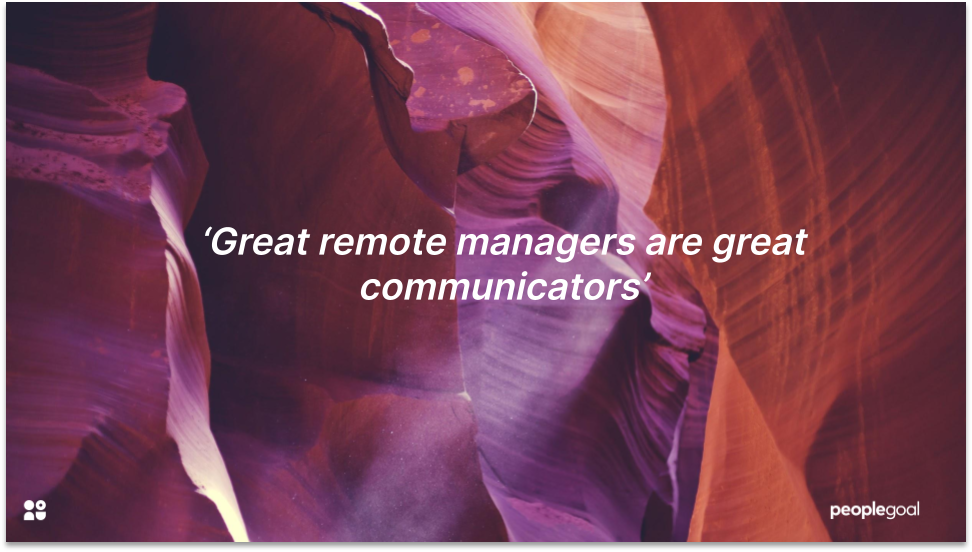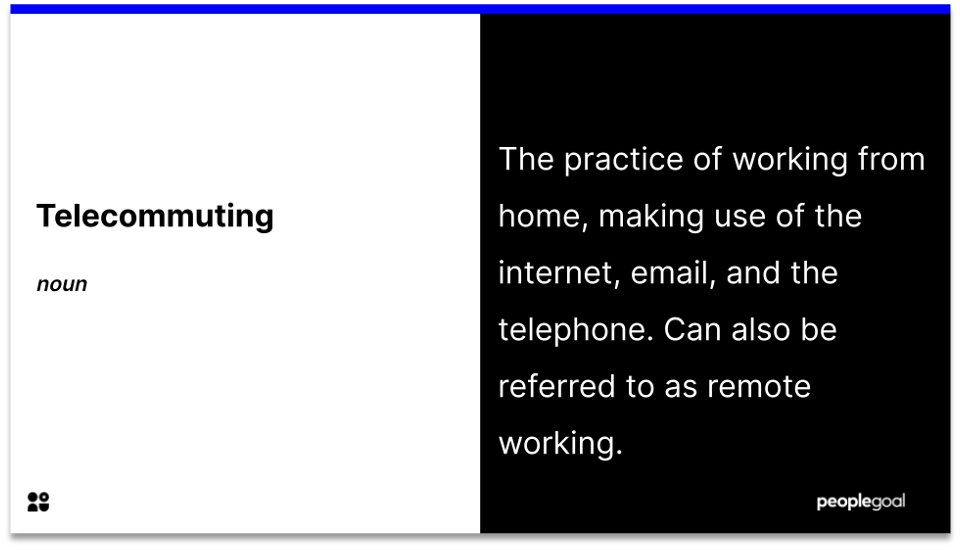Even before the pandemic transformed the way we work, an increasing number of companies brought in policies to allow employees to work from home. Thanks to technology like Zoom, Slack, Google Hangouts, it is no longer essential to work in an office 5 days a week to be a productive team member. In fact, recent studies have shown that many types of work can be done just as well, if not better, from home.
Why remote working is appealing?
Remote working is appealing to both employees and employers. Whilst employees are granted greater flexibility and work-life balance, companies with work-from-anywhere policies find that employee productivity and retention increase, and operational costs are reduced.
HR and People Ops teams have a vital role to play when it comes to ensuring positive employee experience in a home-based role. Telecommuting is a trend that is here to stay, so what do you need to know to support remote teams to do their best work? Read on to find out.
👉 Download a PDF copy of our Remote Work Guide 👈
Benefits of Remote Working
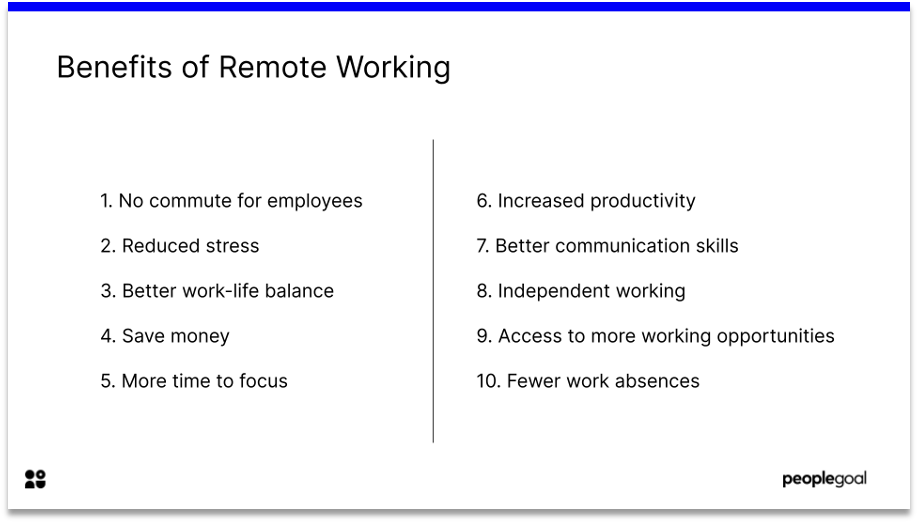
Here are our top 10 work from home benefits:
- No commute for employees
- Reduced stress
- Better work-life balance
- Save money
- More time to focus
- Increased productivity
- Better communication skills
- Independent working
- Access to more working opportunities
- Fewer work absences
Global Workplace Analytics have found that:
Remote workers are as much as 40% more productive when they’re working from home
Create a Work from Home Policy
The first thing to do when allowing employees to work remotely is put together a work from home policy. This will ensure there is clear communication between the company and employees. For example, there are certain jobs where working from home is not possible. Therefore, your policy will need to specify who is able to work from home.
You will also need to consider the needs of staff who work from home. They will usually need access to a laptop or computer, a good internet connection and a suitable working environment. If you allow employees to use their personal devices, you need to have a policy in place to keep important data safe and private.
We have created a sample work from home policy for you to use. It covers telecommuting arrangements for employees. We advise you to customize it to your organization’s needs.
Build a Work from Home Company Culture
Once you have communicated your organization’s work from home policy, the next step is to create a work from home company culture. Simply put, culture is the working environment at your company. It’s how employees relate to one another and the long-term values and intentions of your business.
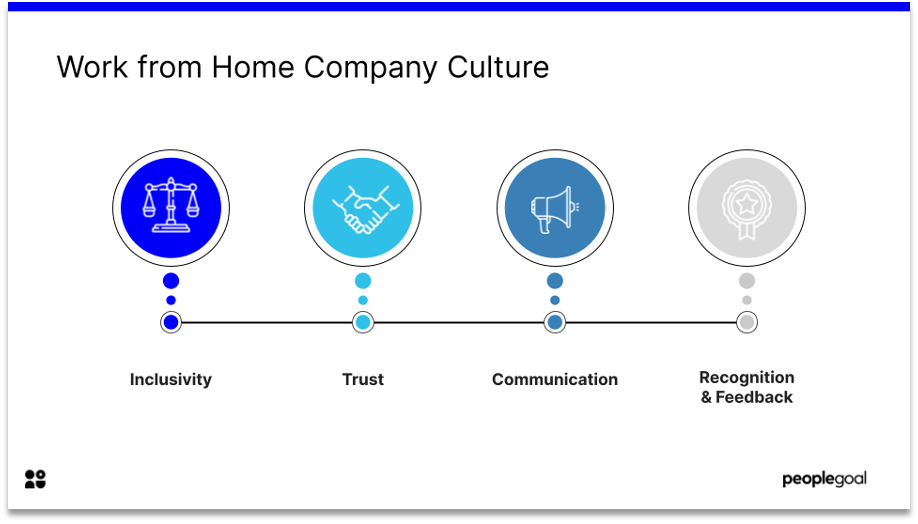
Whilst your organization might already permit remote work in some circumstances, it’s better to foster a culture where employees feel they are able to work from home whenever they need to. These are the four key pillars of a strong WFH company culture:
- Inclusivity: Flexible working values the quality of work over hours worked. This helps create a more equitable work environment, especially those with children, caring responsibilities, disabilities, mental illness etc.
- Trust: ‘Management by walking around‘ isn’t going to work, so managers need to trust their employees to carry out their job duties. Companies with a strong culture of trust find that their employees are less stressed and more productive.
- Communication: Ensure teams have access to virtual communication channels and provide the appropriate training. As much as possible, try to simulate face-to-face interaction with virtual 1:1s and encourage employees to switch video on. Use pulse surveys, wellbeing and mood surveys to check-in with employee sentiment and pinpoint any problem areas.
- Recognition & Feedback: Continue to recognize excellent work across remote teams. Establish regular feedback through informal check-ins. This will help create an open and responsive environment and a growth mindset.
Best Work from Home Jobs
Since the covid-19 pandemic, having the option to work from home has become a “must-have” rather than “nice to have” for employees. Job sites have seen a huge increase in the amount of searches for work from home opportunities. Coupled with improved technology and the need to cut costs, companies of all sizes and industries have decided to create more work from home opportunities.
There are a growing number of types of jobs that allow remote working, from customer service and customer support, to call centers. They can be full time or part time, entry level or senior – and both small businesses and large companies accept people working remotely.
Here are the top 10 industries for remote working:
- Information Technology
- Marketing
- Business Administration and Management
- Mobile App Development
- Shopping
- Education and Training
- Arts
- Human Services
- Correction and Security
- Accounting and Finance
5 Tips to Support Teams to Work from Home Effectively
It is important to effectively manage your remote workforce to make it work for both your business and employees. Providing the correct support ensures that teams are happy and as productive as possible when working from home.

1. Book-end the day
Set up a daily check-in at 09:00 and again at 16:30 for all remote employees. Use the morning meeting to discuss the agenda for the day and outline expectations for deliverables. Use the end of day meeting to check over what’s been accomplished by the team. This gives everyone a chance to catch up on their tasks, discuss any roadblocks and ask for help. These meetings can be short, around 10 minutes, but try to give everyone a chance to talk.
2. Turn camera on
Using video software like Zoom, Microsoft Teams or Google Hangouts is a great way for remote teams to collaborate. Having people show up on camera is a good way to engage employees and makes them feel part of the team.
3. Compulsory office days
Even fully remote teams need to get together at some point. People thrive on physical interaction, and that just can’t be replicated in a virtual environment. Set aside one day every once in a while to get the team together. This could be in the office, or an offsite social occasion.
4. Pair working
Another good tactic for employees who work from home is pair working. This is where two employees buddy up and review each other’s work and provide informal, verbal feedback. This promotes team collaboration, communication and teamwork, helping to restore the lost channels of communication. You can switch the pairs around periodically to see even more benefits.
5. Set clear tasks for your team
Planning ahead for the week is always helpful, but it is essential in the remote environment. It helps everyone understand what is expected from them. You don’t have to stick rigidly to this plan as other urgent tasks might come up during the week, but it is a good place to start.
How to Build Great Employee Relations in the Remote Workplace
Establishing positive employee relations in the remote workplace is essential to WHF success. Employee relations are the way managers maintain great relationships with their employees. This affects every aspect of work – from daily communication between employees to how grievances are handled.
Managers and employees face a new set of challenges due to the overnight shift to remote working. Zero in-person contact and lack of clear communication can cause staff to lose direction and purpose. Businesses need to take time to encourage strong relationships in the remote workplace to create responsive and fulfilled teams.

Set clear expectations
Clearly communicating expectations is the key to great employee relations. Encourage managers to take initiative and regularly communicate tasks to their teams. Employees should know what is expected of them each quarter, month, week and day. Structure makes a huge difference when it comes to bridging the gap between office and home working.
Active listening
All managers should brush up on their communication skills. Provide clear training on how to communicate with direct reports, ask lots of questions and be curious about their responses. This is known as active listening, and is a great way to ensure employees feel heard.
Prioritize feedback
Even while working from home, employees want more feedback. Even though some employees might not perform to the best of their ability, they should still be given regular feedback on their performance and help on how to improve. Formal performance reviews might not be as welcome, so instead use the principles of continuous feedback. Be clear you are looking to develop employees’ leadership skills – this will improve engagement and build trust.
Use positive reinforcement
Employee relations fray if they feel that their hard work is not recognized. All staff need positive reinforcement. Set actionable targets (like SMART goals) regularly, and celebrate the wins. Recognize achievements with verbal praise, with a handwritten note, a shout out on social media or a gift card. A positive outlook motivates employees.
Practice empathy
Empathy makes workplaces more inclusive, supportive and a better place to work. If an empathetic mindset is adopted, employee relations will improve. SHRM recommends instating mentoring processes to better understand staff. Open up communication channels and take time to listen to your employees.
Be inclusive
Inclusive workplaces are happy workplaces – and have a low employee turnover. Ensure all staff have a voice and are able to express their views, regardless of who they are. Try diving large teams into subgroups to allow everyone to weigh in on a project. Consider instating listening circles to discuss the experience of minority groups in your workplace. Encouraging employees to share their views will help improve employee relations.
How to Manage Remote Teams
It is a well-known saying, people leave managers not companies.
According to Gallup:
Mangers make up 70% of the variance in employee engagement score
Managers need to adapt their management style when leading remote teams to make sure their employees have a positive experience. Here are some different management styles you can use to manage remote teams:
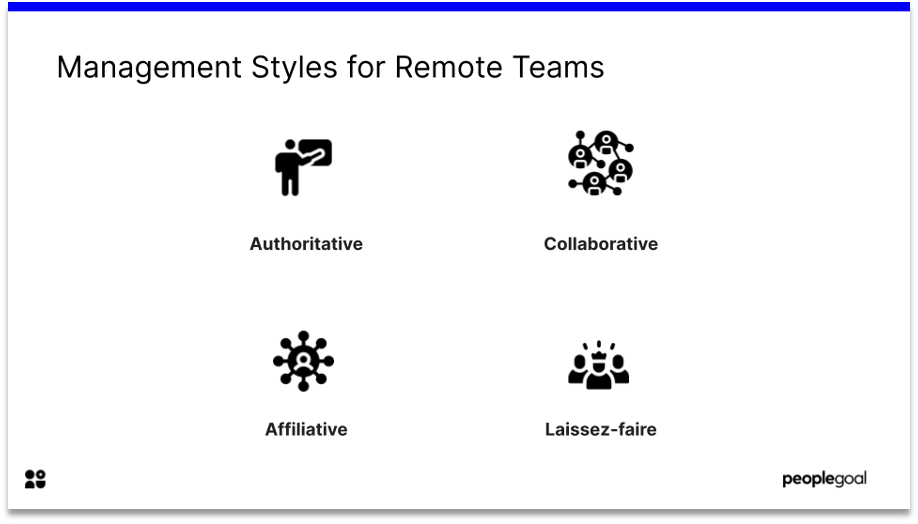
- Authoritative: Inspire teams with shared goals that align with the organization’s strategic direction. This management style provides a clear direction of travel, which helps create a culture of stability amidst uncertainty.
- Collaborative: Decisions are made by the majority, including employees. Have a virtual open-door policy and ensure decision-making is transparent, giving teams the opportunity to give feedback or make suggestions.
- Affiliative: Prioritize creating a positive outlook for teams. Create a safe environment where employees can perform to the best of their ability, without pressure from their line manager. Be flexible, and show trust in your employees’ ability.
- Laissez-faire: Encourage employees to take full responsibility for their work. Having the freedom to work independently without interruption from management could cultivate creativity and innovation.
Feedback Tips for the Remote Workplace
Once you have got into the flow of remote work, you need to start looking at long term strategies to engage remote employees. The best way to do this is through regular feedback.
According to Slack’s Future Forum Research:
Just 12% of employees want to return permanently to the office
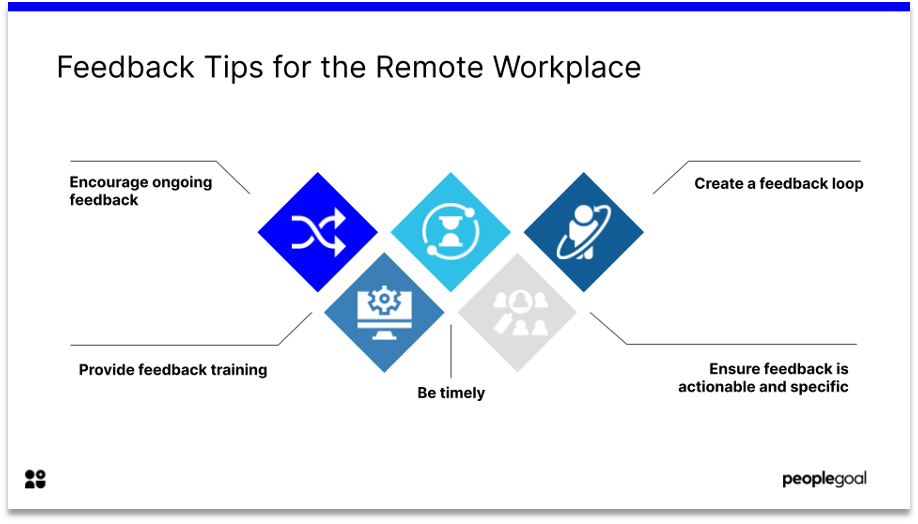
Encourage ongoing feedback
Annual performance reviews are no longer the main source of feedback. Performance evaluation in this way is less precise and actionable than regular, informal feedback. Especially for dispersed teams, it is really important to give positive and constructive feedback regularly. You should also provide structured touch points where employees and managers can sit down to discuss performance – weekly or monthly check-ins is a good way to do this.
Provide feedback training
Giving feedback is tricky at the best of times, and this can be exacerbated by the lack of face-to-face communication. Provide feedback training to managers so they can learn how to give useful and constructive feedback to their employees.
Be timely
Ongoing feedback requires managers to identify and address issues as they arise. Consider using software to schedule and record regular check-ins and 1:1s. You cannot compromise on communication during remote work.
Ensure feedback is actionable and specific
Ensure goals are realistic, and break them down into smaller steps. Create an employee development plan to encourage growth and learning.
👉 Click here for a guide to writing an effective development plan
Create a feedback loop
Great leaders are open to criticism. It is important to gather feedback from employees. The best way to do this is ask during 1:1 meetings. Another great way is to send out weekly pulse surveys using an online tool, as many employees prefer to give feedback anonymously.
Remote Performance Management
Whilst employees are at home, you should still assess performance – however you need to think outside the box in order to not overwhelm your teams. As previously mentioned, feedback should be continuous. We suggest incorporating regular goal-setting, frequent check-ins & 1:1s, peer feedback and reviews to create an environment where teams can perform to their maximum potential.
Remote Goal-setting
Setting clear goals will unify and motivate dispersed individuals, teams and organizations. They provide a clear metric for success, encourage alignment and provide ample opportunity to receive feedback. Watch our webcast below for more on this topic, and learn how to migrate goal setting to the remote environment.
Objectives and Key Results for Remote Teams
Objectives and Key Results – otherwise known as OKRs – is a process of management by objectives used by many disruptive tech companies. OKRs can help set remote teams up for success, as they increase alignment, engagement and motivation. They are also a great way to track progress and encourage employee growth.
The Bottom Line
Navigating the post-pandemic world and managing a hybrid workforce come with their unique challenges. HR teams around the world have had to sit in the driver’s seat and steer their teams towards success. However, equipped with these tips, you are on your way to ensuring a positive work from home experience for all employees.
Next steps
Liked what you just read? Download our eBook: Remote work: How People Operations can adjust to the new ways of working
Ready to 3x Your Teams' Performance?
Use the best performance management software to align goals, track progress, and boost employee engagement.


